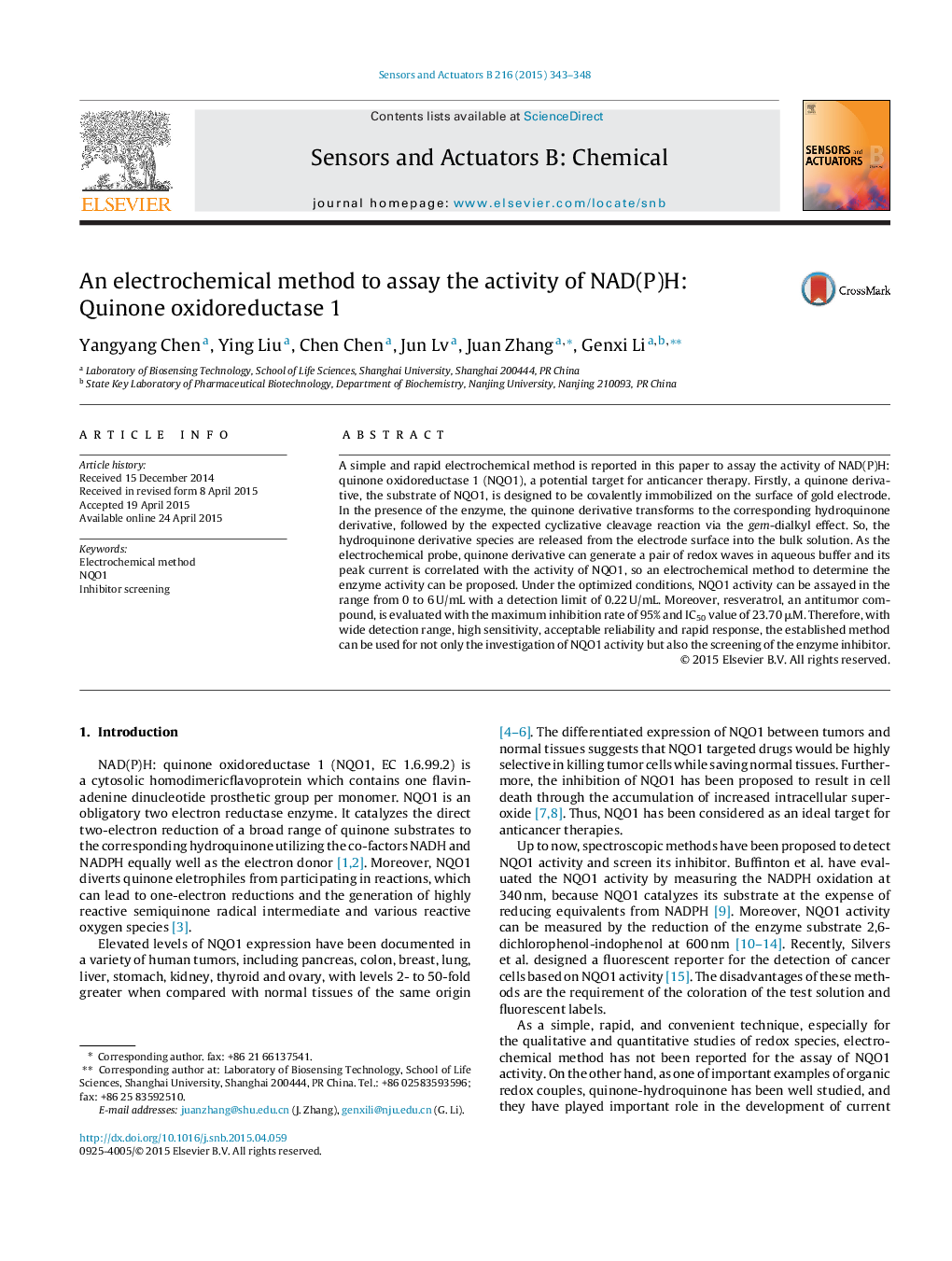| Article ID | Journal | Published Year | Pages | File Type |
|---|---|---|---|---|
| 750599 | Sensors and Actuators B: Chemical | 2015 | 6 Pages |
•A simple and rapid electrochemical method is designed to assay the activity of NQO1.•A quinone derivative is covalently immobilized on the surface of gold electrode.•This method can also be used to screen NQO1 inhibitors.
A simple and rapid electrochemical method is reported in this paper to assay the activity of NAD(P)H: quinone oxidoreductase 1 (NQO1), a potential target for anticancer therapy. Firstly, a quinone derivative, the substrate of NQO1, is designed to be covalently immobilized on the surface of gold electrode. In the presence of the enzyme, the quinone derivative transforms to the corresponding hydroquinone derivative, followed by the expected cyclizative cleavage reaction via the gem-dialkyl effect. So, the hydroquinone derivative species are released from the electrode surface into the bulk solution. As the electrochemical probe, quinone derivative can generate a pair of redox waves in aqueous buffer and its peak current is correlated with the activity of NQO1, so an electrochemical method to determine the enzyme activity can be proposed. Under the optimized conditions, NQO1 activity can be assayed in the range from 0 to 6 U/mL with a detection limit of 0.22 U/mL. Moreover, resveratrol, an antitumor compound, is evaluated with the maximum inhibition rate of 95% and IC50 value of 23.70 μM. Therefore, with wide detection range, high sensitivity, acceptable reliability and rapid response, the established method can be used for not only the investigation of NQO1 activity but also the screening of the enzyme inhibitor.
